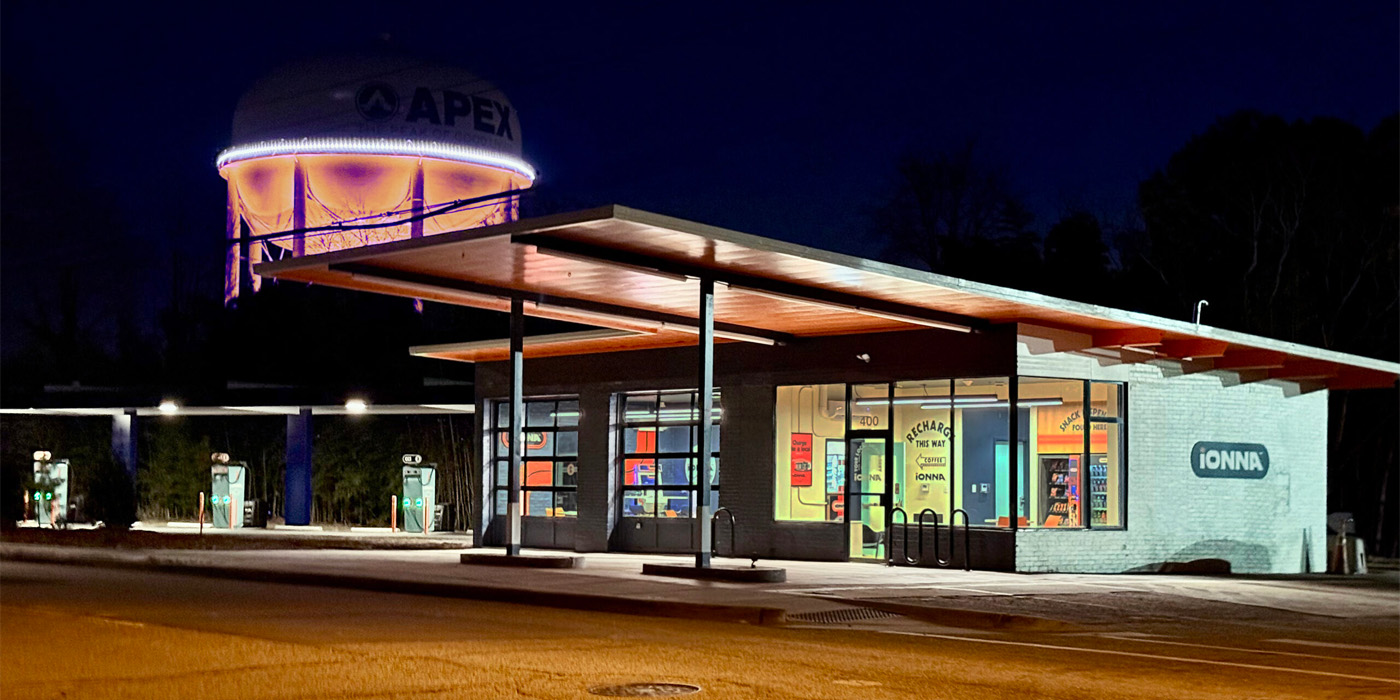I’m far from a fan of either libertarianism or the new administration, but the sooner we are rid of gov’t-mandated and gov’t-subsidized DCFC, the better!
Perhaps an argument can still be made for the early years, given the chicken-and-the-egg problem.
But now, really? We’ve already had enough years of EA, NEVI, and various state programs to call it a wrap on the “natural experiment” with the principal-agent problem. Ford has also contributed to this unintended research, with its mandated chargers at independently owned dealers often ICE’ed by the dealer’s own cars or entirely broken (as has been the case with all three chargers at Bow NH).
The one good role for gov’t would be to speed up the utility hook-up process. What that would look like at some combination of the local, state, and/or federal levels, I have no idea. But even Tesla often has a long wait for that.
And as for other networks, I recently stopped at a new station with two 180kW chargers, each with two plugs that can be used simultaneously. Everything looked ready to go. Checked the app: “Coming soon!” I called the network out of curiosity. Based on a service ticket, looked like the station work finished in August 2024. The customer service rep said she’s seen stations stay in this status for years. Bonus points that it must have received state funding, as the location makes no sense, a 20-mile roundtrip from the interstate, with no on-site amenities other than a souvenir shop open only a few months out of the year (which therefore must be reliant on gov’t funding, not the site owner’s funding).
At least a somewhat nearby town put in a station at a perfect location, right next to an interstate exit, using up $2.46 million of federal CFI funding for merely two DCFC chargers (plus a couple L2), each with two plugs that can used simultaneously, with a maximum speed of … supposedly 640kW, but I only briefly hit barely above 100kW when I should have been at around 225kW (not in our i4, but in a different EV that also allows me to see the actual battery temperature, so definitely wasn’t my car’s fault).
Yes, not much money to be made in EV charging since so much of the money invested in EV charging is somebody else's money or money that is being forced to be spent, so profitability from reliability doesn't seem to matter.
EA though had complete flexibility for station setup. The consent decree requires spending $2b in officially termed Creditable Costs on EV charging and related initiatives.
This old interview from over half-a-decade ago is highly revealing:
https://insideevs.com/news/389891/exclusive-interview-electrify-america-problems-solutions/
“I then asked if the aggressive timeline was a problem and that if they had more time to install the units would there have been fewer issues. They refused to use that as an excuse and told me that they are the ones responsible for the timeline. Electrify America provided the plan to CARB and the EPA, the governing bodies overseeing Electrify America's work, they weren't told how many units they had to install by what deadline. They set the deadlines so they aren't going to complain about them now.”
“They also told me that they didn't have to install these ultra-high-speed chargers, they choose to. They could have installed thousands of 50 kW DC fast chargers and called it a day. That would have been so much easier because there were existing vendors with proven units. The parts supply chain was already in place and they wouldn't have had to use so many different vendors. However, they choose to take the hard route, because it's what they felt was needed to really push electric vehicle proliferation.”
“So they knew full well there were going to be problems in the beginning because they were basically inventing new units and that their issues would be compounded by the fact that they needed to fix every issue four times. Why do it, then? According to Palazzo and Jones, it was partly because they are electric vehicle believers and wanted to help drive mass adoption, and also partly because the network needs to be sustainable after the ten-year implementation period. Having a network of 150 kW to 350 kW chargers guarantees that they won't be obsolete any time soon.”
As we all know now, all of those chargers are being replaced because they become functionally obsolete. My favorite is the West Lebanon NH that lasted only a couple years before its 2x150kW + 2x350kW had to be replaced given poor reliability even by EA standards (e.g., all four chargers were broken on Labor Day 2023).
All these experiences are making me consider getting a lawn sign with this slogan:





